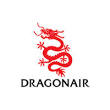The Journal of Crime & Punishment
Software Piracy:Page 5
page 6
SOFTWARE PIRACY


Shrek (c. 1994 – 6 June 2011) was a Merino wether (castrated male sheep) belonging to Bendigo Station, a sheep station near Tarras, New Zealand, who gained international fame in 2004 after he avoided being caught and shorn for six years. Merinos are normally shorn annually, but Shrek apparently hid in caves, avoiding muster. He was named after the fictional character in books and films of the same name.[1]

Dr. John ("Jack") Edward Lovelock MB ChB
New Zealand athlete, and the 1936 Olympic champion in the 1500 metres.

Hamish Carter, Kiwi Champion

In my letter to the Minister of Information technology I outline my personal experience with the earliest versions of the internet.
In 1990 at the Bay of Plenty Polytech we used the newly released (Microsoft) DOS 5 operating system, which wasn't officially released until 1991 (actually June or late 1990), (correction 1991) ( but we had machines running this software from the beginning of the year). Look at Wikipedia - DOS Operating Systems timeline for confirmation. I know a lot about this but you don't need to know for now, who did what first and where.
DOS /dɒs/, short for Disk Operating System,[1] is an acronym for several closely related operating systems that dominated the IBM PC compatible market between 1981 and 1995, or until about 2000 including the partially DOS-based Microsoft Windows versions 95, 98, and Millennium Edition.
May Paterson takes his working prototype board to Microsoft to try it with Stand-alone Microsoft BASIC, which Bob O'Rear developed for the 8086 by simulating the 8086 chip on a DEC computer. After eliminating a few minor bugs, Microsoft had a working 8086 BASIC.[26]
June Microsoft and Paterson attend the National Computer Conference in New York City to show Microsoft's 8086 BASIC running on Seattle Computer's system, sharing Lifeboat Associates' ten-by-ten-foot booth. At that meeting, Paterson is introduced to Microsoft's MDOS (later renamed to MIDAS), which used the File Allocation Table (FAT) file system.[11][26][34]
1980 August Paterson's operating system, which he calls QDOS 0.10 ("Quick and Dirty Operating System"), ships.[37] It's crammed into 6 KB of code.[46] Seattle Computer Products runs an ad in Byte marketing it as 86-DOS for $95.[47] Seattle Computer contacts Microsoft about adapting Microsoft BASIC for the new operating system, proposing a cross-licensing arrangement.[8]
1981 February O'Rear gets 86-DOS to run on IBM's prototype computer. 86-DOS had to be converted from 8-inch to 51⁄4-inch floppy disks and integrated with the BIOS, which Microsoft was helping IBM to write.[11] An Intellec ICE-88 in-circuit emulator expedited the debugging.[46][55]
April Paterson finishes, and Seattle Computer releases, 86-DOS version 1.0,[37][56] presumably completing the requirements specified in Exhibit "A" of the Microsoft agreement.
May Paterson leaves Seattle Computer Products for Microsoft and joins O'Rear to help finish adapting 86-DOS to IBM's prototype hardware.[26]
July Microsoft buys all rights to 86-DOS from Seattle Computer Products, initially for an additional $50,000 and favorable licenses back from Microsoft.[37][61] After settling a 1986 SCP lawsuit, the total cost to Microsoft was $1 million.
August Microsoft delivers its adapted 86-DOS to IBM. The product includes three major modules: the BIOS initialization module SYSINIT, the kernel (IBMDOS.COM), including the DOS API, and the shell (COMMAND.COM) supporting internal commands COPY, DIR, ERASE, RENAME and TYPE, plus Paterson's EDLIN line editor and DEBUG debugger, linker LINK.EXE and a few external commands: FORMAT, CHKDSK, SYS, BASIC, BASICA, DATE and TIME (the latter two added on IBM's request).[26] This product was later called MS-DOS 1.0 by Microsoft. Similar in many ways to CP/M, it consisted of 4000 lines of assembly language source code and ran in 8 KB of memory.[11]
December A Seattle Computer ad in InfoWorld offers an 8086 system with 86-DOS under its new name MS-DOS, noting that MS-DOS is "also called 86-DOS, IBM PC-DOS, Lifeboat SB-86".[76] Seattle Computer was the first company to offer the product under the MS-DOS name.[8]
1982 March Paterson finishes work on the first DOS upgrade, quits Microsoft and returns to work for Seattle Computer.
June Microsoft releases MS-DOS 1.25 (equivalent to PC DOS 1.1).[95] Columbia Data Products introduces the MPC, the first PC clone—which runs MS-DOS 1.25—soon followed by others including Eagle Computer. These machines were not 100% IBM PC compatible. Satisfying "near-compatible" OEM requests for IBM compatibility proved difficult, and not until version 3.1 was Microsoft able to supply a system that other OEMs agreed was identical with IBM's.
1983 March Microsoft releases MS-DOS 2.0, which introduces a Unix/Xenix-like hierarchical file system and installable device drivers (e.g. ANSI.SYS) in the system configuration file CONFIG.SYS—a first step towards plug and play.[46] New internal commands are BREAK, CHDIR or CD, CLS, CTTY, EXIT, FC, MKDIR or MD, PATH, PROMPT, RMDIR or RD, SET (environments), VER, VERIFY and VOL. New external commands are DISKCOPY (not identical to IBM's version), PRINT (spooling); three filters supported with standard devices and redirection: FIND, SORT and MORE; BACKUP, RESTORE and RECOVER. New batch file commands are ECHO, FOR, GOTO, IF and SHIFT. CONFIG.SYS commands are BREAK, BUFFERS, DEVICE, FILES and SHELL. New file attribute bits are read-only, volume label, subdirectory and archive. A team of six developers produced version 2.0, led by Paul Allen, Mark Zbikowski and Aaron Reynolds.[11]
May Microsoft introduces the Microsoft Mouse. It comes in either a bus or serial version, with the Multi-Tool Notepad, a mouse-based text editor. Microsoft also introduces Multi-Tool Word, designed to work with the mouse.[119][120]
October The NEC PC-100, modeled blatantly after the Apple Lisa, is the star introduction at Tokyo's Japan Data Show. It runs MS-DOS 2.01, which added support for individual country date, time and currency display formats via the CONFIG.SYS COUNTRY command, and 7000 16-bit Japanese kanji characters.[11][95][121] With the help of Kazuhiko Nishi, leader of ASCII Microsoft, Microsoft arrived early in Japan.[8]
November Less than two weeks after VisiCorp announced the release of Visi On (see below), in New York, Microsoft officially announced Windows as "a graphical user interface to cover DOS." Gates said that with Windows, users would finally be able to use their software on any PC without compatibility issues.[127][128]
1984 August Microsoft releases MS-DOS 3.0, after a difficult year and a half of grappling with problems of software incompatibility, remote file management, and logical device independence at the network level. In laying the foundation for networking, the core team of five people led by Zbikowski and Reynolds redesigned and rewrote the DOS kernel. Redirector and sharer interfaces for IBM's network adapter card were added, but the redirector itself, which interacts with the transport layer of the network, wasn't ready.[11]
November Microsoft releases MS-DOS 3.1, which added a new local area network supplement Microsoft Networks 1.0 (identified earlier as MS-Net)[166] for use on non-IBM network cards. Microsoft Networks services are provided by a file server which was part of the Networks application and ran on a computer dedicated to the task.[11] Neither MS-Net, nor its successor LAN Manager, was particularly successful competing against market leader Novell, whose product Novell NetWare had a seventy percent market share.[26]
1985 July Microsoft says it is joining forces with Lotus and Intel in support of the EMS, which will now be known as the Lotus-Intel-Microsoft Specification. Microsoft plans to integrate expanded memory capabilities into its future systems software products. In conjunction with the announcement, Intel released a new version 3.2 of the specification. Intel said that enhancements in revision 3.2 allow multitasking operating systems to support more easily multiple application programs sharing expanded memory.[181] Application programs communicate directly with the EMM using a software interrupt, bypassing DOS. A new EMM function supported multitasking operating systems by saving and restoring page maps.[95][182]
November At a COMDEX roast, Gates is presented with a vaporware award, as the "two-years late" multitasking operating environment Windows 1.0 is introduced.[194][195] PC Magazine says its best features aren't multitasking and windowing, but rather its ability to turn ordinary applications into memory-resident utilities, and, for developers, its Graphics Device Interface.[196]
Microsoft releases MS-DOS 3.2. It adds support for 31⁄2-inch 720 KB floppy disk drives. A new device driver RAMDRIVE.SYS creates a virtual disk in either conventional memory, extended memory or Lotus-Intel-Microsoft expanded memory. However, the MS-DOS kernel does not take part in expanded memory manipulations and does not use expanded memory for its own purposes.[11] RAMDRIVE.SYS reportedly uses the undocumented LOADALL CPU instructions, which permit a real-mode program to access any location in extended memory.[198] Presumably this allows RAMDRIVE.SYS to improve upon IBM's relatively slow and unreliable VDISK process. This is the first MS-DOS version Microsoft offered in a shrink-wrapped packaged version for smaller OEMs or system builders.[199]